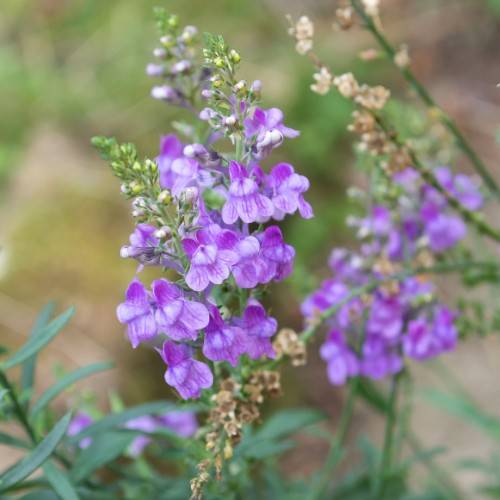
toadflax
Linaria purpurea
Cycle:
Herbaceous Perennial
Watering:
Minimum
Hardiness Zone:
5 - 9
Flowers:
Flowers
Sun:
Full sun
Leaf:
Yes
Growth Rate:
Low
Maintenance:
Low
Drought Tolerant:
Yes
Salt Tolerant:
Yes
Invasive:
Yes
Care Level:
Medium
watering
Toadflax should be watered deeply 1 or 2 times a week depending on the environmental conditions. During hot and dry weather, the plant may require daily watering. Monitor the soil's moisture level to determine if supplemental water is needed. Water the base of the plant and avoid splashing the foliage. Make sure the soil is evenly moist after each watering, but do not leave the soil soggy.
sunlight
Toadflax (Linaria purpurea) is a plant species that prefers full sun for most of the day, from early morning until late afternoon. It prefers at least 6 hours of direct sunlight each day, but can tolerate some brief periods of shade. Ideally it should receive direct sunlight for about 10 hours each day. Additionally, toadflax grows best in soil that is moist, well-drained, and moderately fertile.
pruning
Toadflax (Linaria purpurea) should be pruned once a year at the beginning of the growing season. This will reduce the number of flowers produced, but will also keep the plant from becoming too unruly. Pruning should involve cutting off any dead or old stems and removing any diseased or weak shoots. Depending on the plant’s size, the stems can be trimmed down to 8-12 inches. In order to ensure the plant produces new flowers, cutting a few healthy stems down to just above the ground can encourage new growth. Overall, regular pruning will help to maintain the health and vigor of the toadflax.
